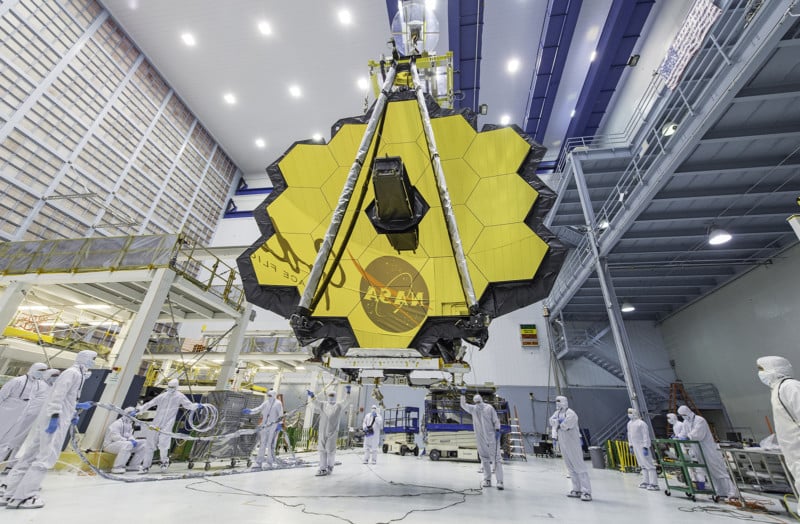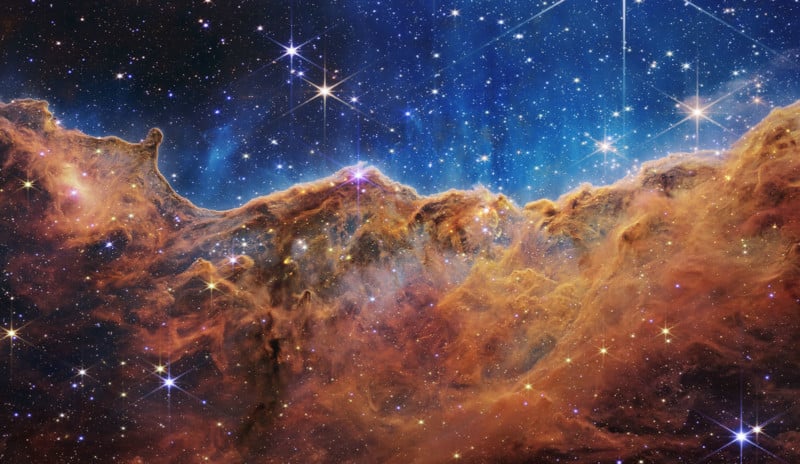The James Webb Telescope Stores its Photos on a Small 68GB SSD
![]()
The James Webb Space Telescope is capturing photos of the universe in remarkable resolution, but it only has enough onboard storage to keep about a day’s worth of photos at a time.
According to a report from IEEE Spectrum, which was spotted by Engadget, the James Webb Space Telescope is equipped with a relatively small 68GB solid-state drive (SSD). Compared to Hubble, which generates about one to two gigabytes of data per day, Webb can produce up to 57GB depending on the number of observations it is scheduled to make.
Since the telescope doesn’t maintain a constant connection with Earth, any scientific data it collects during its lifespan will need to be stored on board until it can be wirelessly transferred via the Deep Space Network (DSN), a wireless resource it shares with a host of satellites and off-world observation tools like the Parker Solar Probe, Transiting Exoplanet Survey Satellite, the Voyager probes, and all of the Mars rovers and orbiters.

The DSN isn’t particularly fast, and transmissions come in at 28 Mbps via a 25.9 GHz KA-band connection. That means it can take around 4.5 hours for Webb to offload a full SSD and the orbiting observatory can only do so during two four-hour windows each day with each allowing the transmission of 28.6GB of scientific data. Those contact windows are scheduled 12 to 20 weeks in advance.
As such, James Webb isn’t designed to stay out of contact with Earth for very long, which is one of the reasons scientists went with a relatively small 68GB SSD. The other has to do with choosing an SSD that can withstand the rigors of living in space.
The James Webb Space Telescope sits about a million miles from Earth where it is constantly hit with radiation and has an operating temperature of less than 50 degrees above absolute zero (-370 degrees Fahrenheit). As a result, the SSD — along with all the parts on the observatory — has to be hardened to withstand the environment in which they would exist for the next decade.

The SSD on James Webb isn’t as fast as consumer SSDs but it can still be filled to capacity in about 120 minutes. On top of that, about three percent of the capacity of the SSD is reserved for engineering and telemetry data. Scientists also expect the telescope to lose capacity over time to about 60GB in 10 years because of deep-space radiation and wear and tear.
All this might make it seem like Webb would have difficulty continuing to offer science observations to the public for as long as Hubble, which has remained in operation for 32 years (although not without complications). But last week, Webb’s team determined that the telescope is actually performing well beyond expectations and while they haven’t said it is going to make it to the 30-year mark, the team seems confident it can continue to operate for at least 20 years.
Image Credits: Webb Space Telescope, NASA, STScI